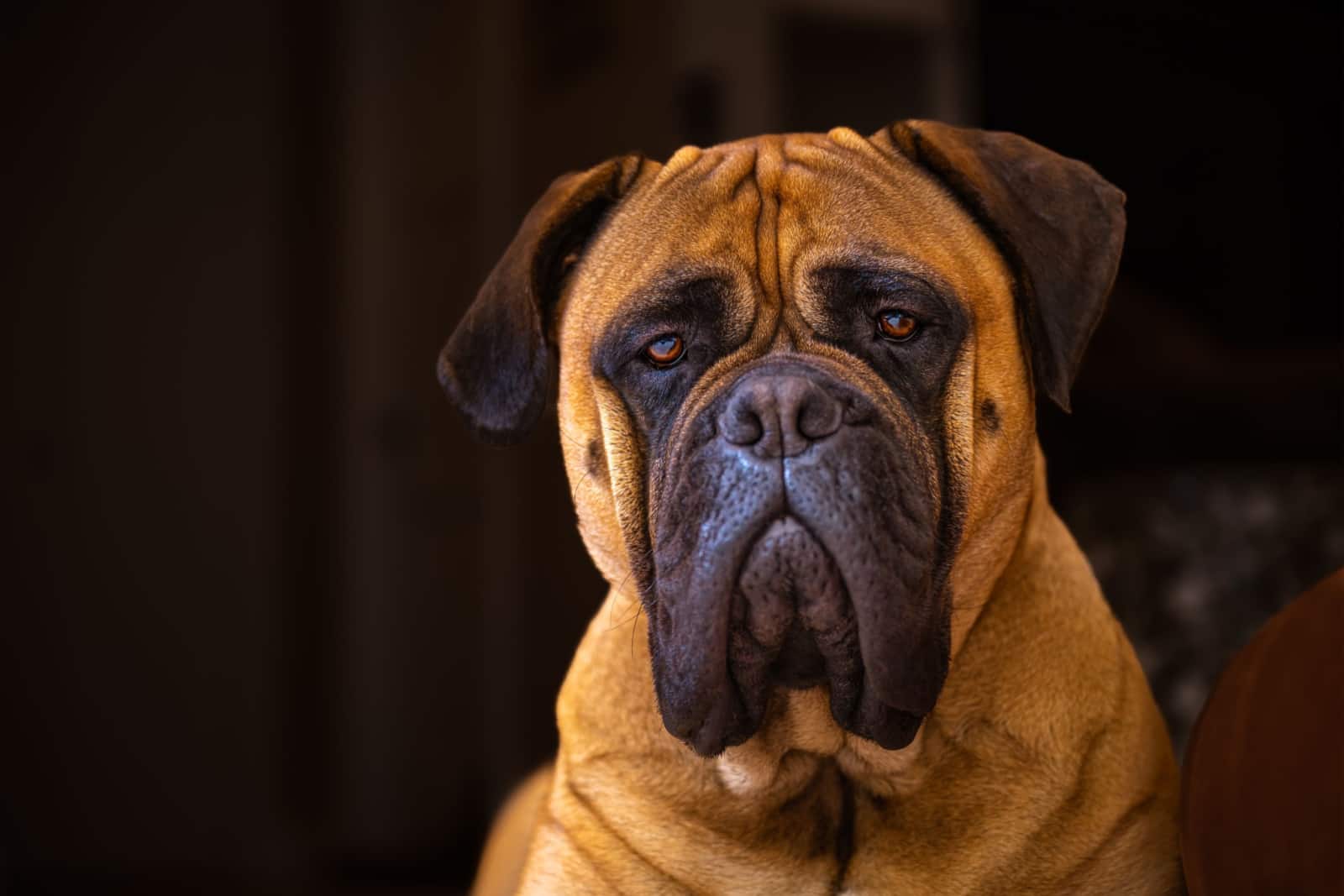The Bullmastiff feeding chart is one of the easiest ways to maintain the healthy weight of these big doggies that love to eat.
Large canines generally require more food than small or medium-sized pups, but sometimes it might seem as if they’re eating too much.
This feeding guide will help you understand just how much food is enough for your Bullmastiff, and what kind of food is good for them.
Remember, the quality of the dog food is just as important as the quantity, so make sure that your Bullmastiff puppy is getting the best of both.
How Much Food Should You Give Your Bullmastiff?
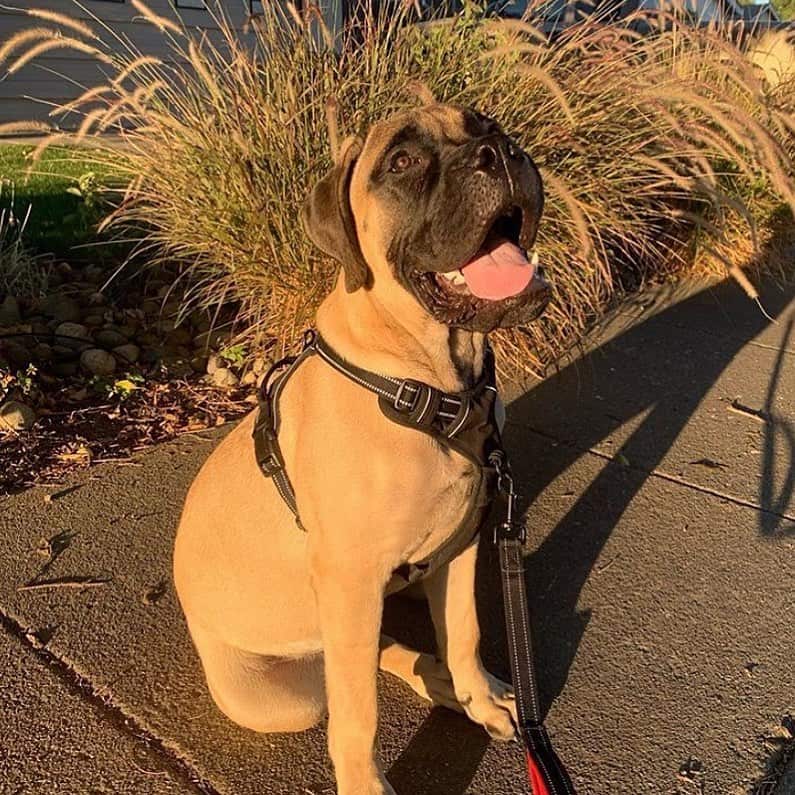
The average young adult Bullmastiff consumes anywhere from eight to twelve cups of dry food (also known as “kibble”) every single day.
The particular quantity that is required for your canine companion is going to be determined by the type of food you’re planning to feed your pup, as well as the characteristics of your canine (height, weight, age, gender).
While mature Mastiffs have a lower caloric need, growing pups and nursing dog mothers could need a lot more food.
Bullmastiff Feeding Chart
[table id=686 /]
This may change somewhat depending on the kind of dog food that you select for your pet. There are foods that have a higher caloric content than others.
Checking your Mastiff puppy’s body conditioning score on a regular schedule is the most reliable method for determining whether or not he is getting the appropriate quantity of food.
You can also weigh your pup regularly and check the Bullmastiff growth chart to get a general picture of how big your doggie should be.
Bullmastiff Puppy Feeding Chart
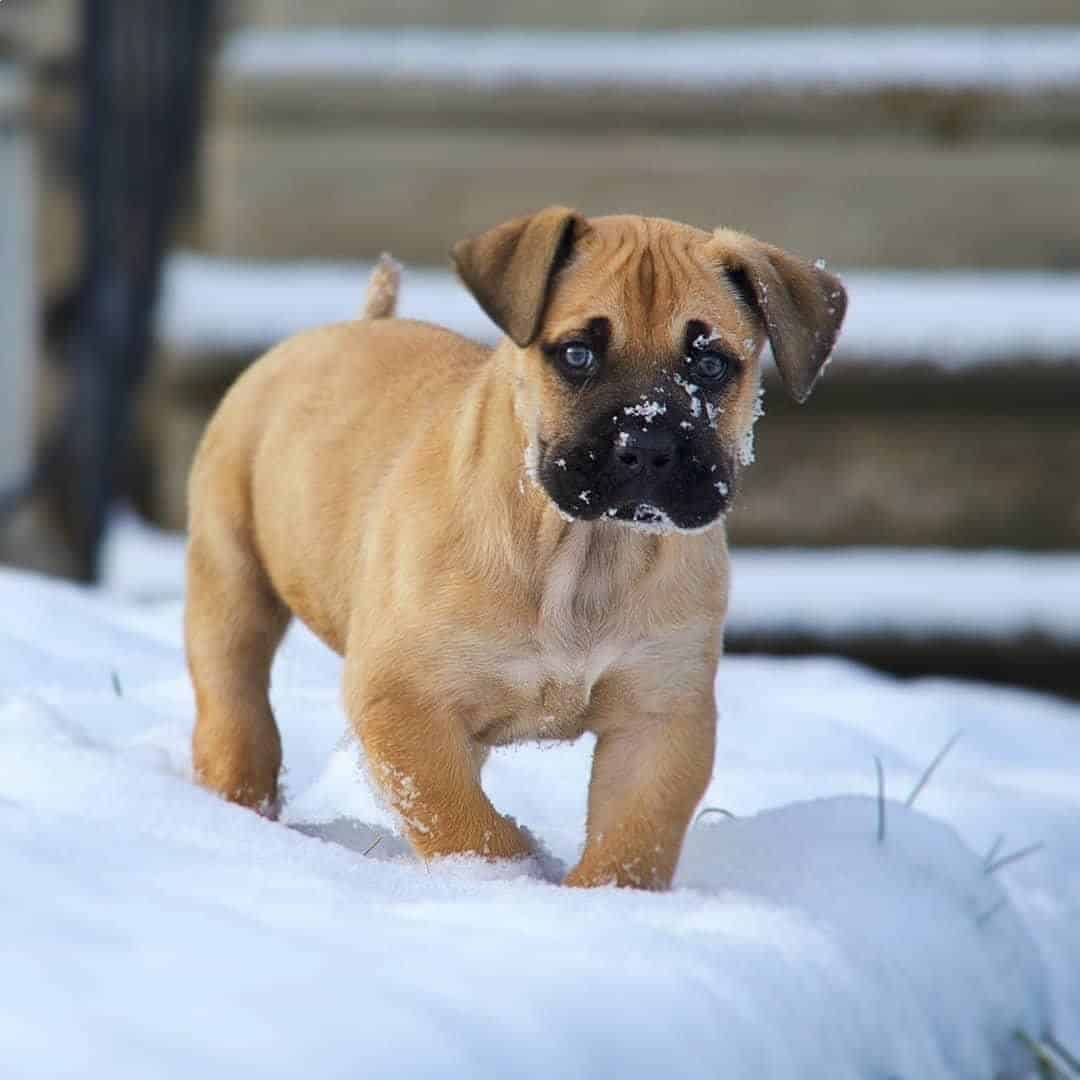
When they mature into adults, Bullmastiffs have different dietary requirements than when they were puppies.
Young Bullmastiffs need a larger percentage of fats and proteins in their diet, which is why they need to have more meals during the day.
Dog lovers who have any knowledge of Bullmastiffs are surely familiar with the fact that these puppies aren’t small even when they’re young. An eight-week-old Bullmastiff might weigh up to 28 pounds (a few pounds more or less), which is astonishing.
However, that’s why they require different servings and meal sizes than what is usually stated in standard feeding guidelines for puppies.
Also, keep in mind that the quantity of food that is recommended in this article is simply an estimate.
You can also consult with a licensed vet in order to get professional advice on the amount of food your doggie should receive each day.
First Four Weeks
During the first weeks of their life, Bullmastiff puppies behave just like any other pup of their age, no matter which breed they belong to.
Essentially, the owner or breeder of the litter and the parent canines isn’t supposed to get too close to the pups as the mother might feel more protective during this period.
Considering that Bullmastiffs breastfeed exclusively during the first four weeks, there’s no need for you to interfere between the mother and her pups.
However, as soon as the puppies turn three or four weeks old, they’re more than ready to start eating puppy food.
How To Wean Bullmastiffs
Weaning is one of the most important processes during puppyhood as this represents the period when your pups start to rely on themselves rather than on their mother.
The mother-puppy bond is very important as it helps the dogs develop essential physiological functions from the first days of their life. This includes nursing as well, but only for the first few weeks.
After that, the owner should introduce puppy food, which contains all the necessary nutrients for that age.
The best way to wean puppies is to try offering a small amount of puppy food (porridge, puppy mush, soft food mixed with puppy formula) and combine it with nursing.
It’s important to remove any leftovers after ten minutes, and prepare only fresh meals on a regular basis.
You can follow the feeding guidelines that are stated by the manufacturer or consult with a professional (a dog food nutritionist or a vet) on the amount of food your pup is receiving every week.
First Two Months
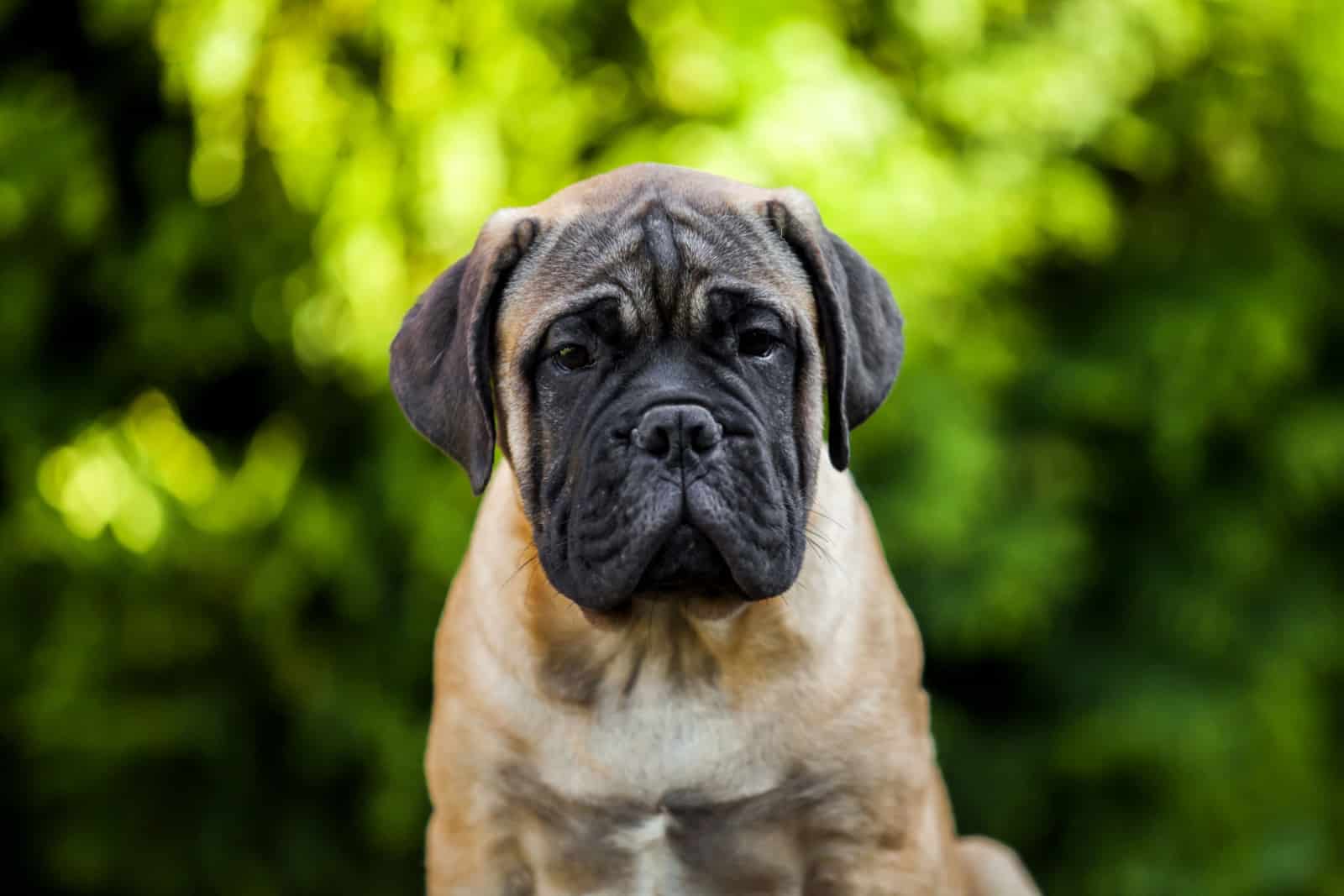
After the puppies turn one month of age, there will be no reason for them not to eat puppy food. All of the pups should be weaned before the sixth week of their life (seven, at most).
During the second month, Bullmastiff pups should have a regular three to four meals per day, which will contain about one cup of dog food.
Essentially, this means that after the pup transfers to dog food completely, it should eat at least three to four cups per day.
Pups, in general, have a greater requirement for regular feeding than adult canines do.
This is due to the fact that the digestive system of puppies will more easily process the food they’re used to, and the fact that they have higher energy levels and require more food.
READ NEXT: 24 Medium-Energy Dog Breeds That Might Be Suitable For You
Three To Four Months
You will already notice changes in your Bullmastiff pups when they turn three months of age. Although still puppies, these doggies will look much more mature and ready for outside activities.
When it comes to the meal sizes and the number of times the pup should be fed throughout the day, it can be said that anywhere from four to seven cups is just fine.
Of course, the exact number of servings will be determined for each pup and their development individually.
If you’re not completely sure how much food you should give the pup, a good place to start is by feeding the pup an amount that falls in the middle of the chart.
Instead of using a feeder, it’s recommended for dog owners to feed the pups themselves as this will strengthen the bond between the two of you.
Five To Six Months
The progress will already be visible as the Bullmastiffs grow larger and stronger each day. However, their proper development is greatly influenced by the amount and the number of meals they receive on a daily basis.
During this period, your pup might eat up to eight cups per day, which might seem quite a lot, but it is required, considering that puppies are developing at a fast pace in the later stages of puppyhood.
However, this doesn’t mean that you need to feed your pup six to eight times per day. As soon as they reach five months of age, you can start feeding your pup two to three times a day (depending on your pup’s needs and regular schedule).
Seven To Ten Months
Some dog owners claim that they see the most changes in their pups during this three-month period. Most Bullmastiffs will take on the physical features of adult canines, although they won’t reach their maximum height and weight for long.
When it comes to food, you can stay at seven to eight cups of food per day without any problems. However, if you notice that your pup is still a bit hungry, you can add one more cup to the bowl.
This is the period when most changes occur, not only physically, but mentally. The puppies are preparing to become adult canines, although they still have a lot to learn.
Twelve Months And Up
Even though most puppies become young adults as soon as they turn twelve months of age, that might not be the case with Bullmastiffs.
They’re definitely far from small puppies, but their body structure and behavior show that there is still a lot of space for improvement.
The majority of Bullmastiff pups are considered mature once they turn eighteen months of age.
It’s natural that pups require more food during the period of transition from a puppy to an adult canine, so don’t be surprised if your pup is capable of eating up to 12 cups of food per day.
However, keep in mind that as soon as your pup turns one year of age, it would be good to start the transition from puppy to adult dog food.
You can add a small amount of adult food to their meals and gradually increase the percentage of it until you completely eliminate puppy food.
What Kind Of Food Should Your Bullmastiff Eat?

It is essential to keep in mind that not every dog is the same, even if it belongs to the same breed, and what might work for your pup doesn’t have to be good for someone else’s pet.
Instead of relying solely on the experiences of other owners, you should also contact a health professional, such as a vet or a dog food nutritionist, who will be able to provide you with answers based on your dog’s size and appearance.
Although they do consume certain plant-based meals, domesticated dogs are mostly carnivores.
It is essential to check that the food you provide your pet is both complete and balanced for the stage of its life it is in, as well as for any medical condition it may have.
A diet consisting only of kibble is a perfectly fine option for your dog to follow, but if you notice that your pup is avoiding it or having any kind of health issues, you should switch to other options.
Alternately, you may add some cooked or raw meat, fish, veggies, and grains to their diet to spice things up.
Foods You Can Feed Your Pup
Due to the fact that canines are considered carnivores, the meat they consume should make up the bulk of their diet. However, they are not true carnivores, and they do not exclusively consume meat.
Dogs in the wild subsist mostly on the meat of their prey animals, with the exception of certain seasonal plants.
There have been reports of wolves in the wild eating fruit on occasion. Therefore, there’s no reason to avoid certain fruits and veggies in your pet’s diet as they can benefit from them as well.
The majority of your considerations on the diet you provide for your dog should center on the foods listed below.
Proteins
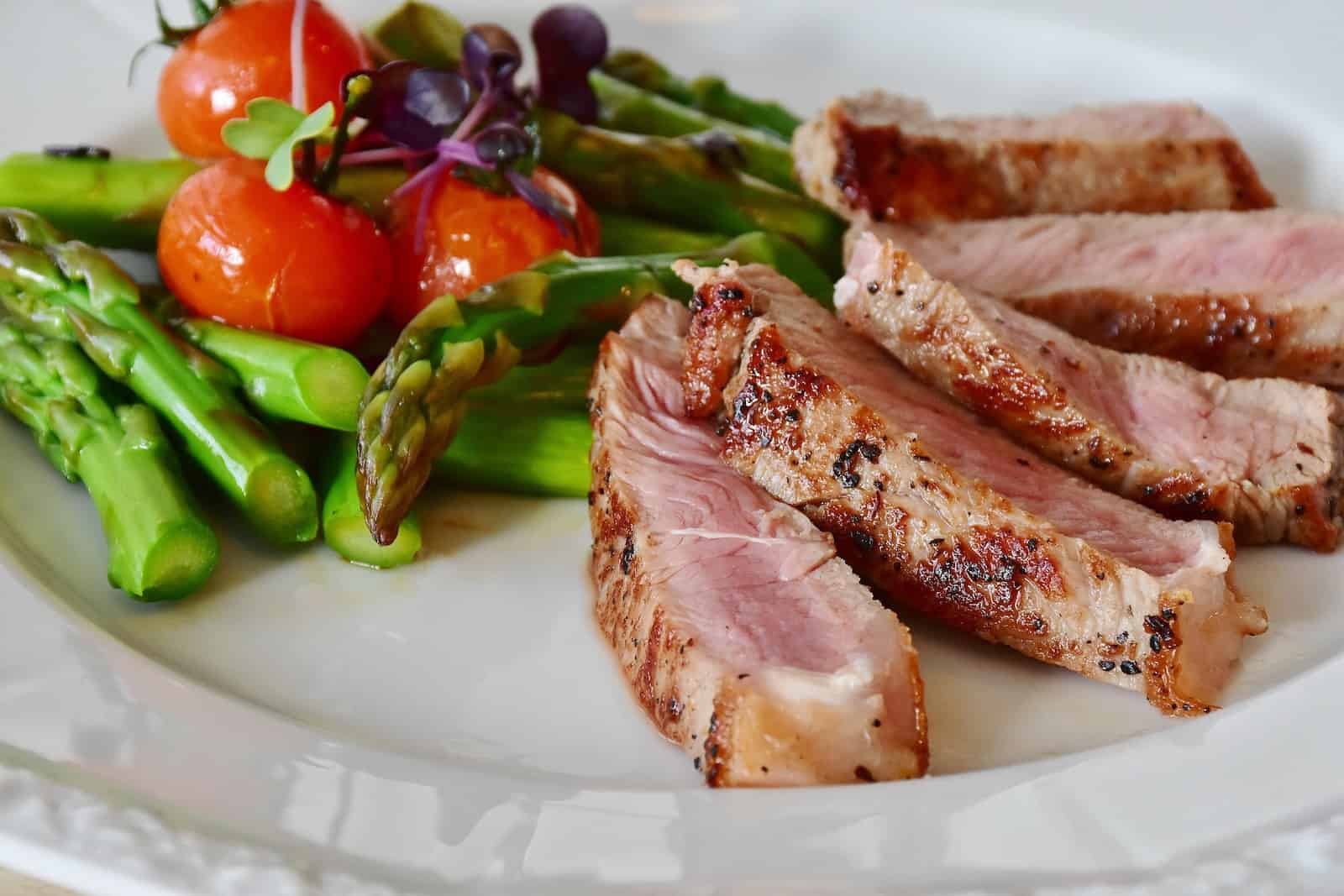
Even though meat is nutritious for dogs, it should be cooked and free of small parts of bones that might cause choking.
Because some dogs are lactose intolerant, and hence, unable to consume dairy products, the canine’s intake of protein must come from a different source. It is crucial to keep this in mind, especially if you notice that your dog reacts negatively to any dairy product.
Some examples of foods that contain protein that canines can consume are:
• Pork
• Chicken
• Fish
• Cheese
• Turkey
• Beef
• Eggs
• Yogurt
RELATED: Can Dogs Eat Fish Sticks? Healthy Choice Or Big Hazard?
Fruits And Veggies
Certain fruits are edible for Bullmastiff puppies and adult canines, but because of their high sugar content, you should limit the amount of fruits and choose the ones that have lower sugar levels.
It is important to consult with a licensed vet or a dog food nutritionist before feeding your pup any other kind of fruit or vegetable because some of them pose a health risk for this type of animal.
Generally speaking, canines are permitted to consume fruits and veggies from the list below:
• Apples
• Seedless watermelon
• Pumpkin
• Green beans
• Sweet potatoes
READ NEXT: 5 Michelin Recipes On How To Cook Sweet Potatoes For Dogs
• Broccoli
• Blueberries
• Tomatoes – in limited amounts
• Bananas
• Carrots
• Green peas
Grains
Fibers should also make up a part of the Bullmastiff’s diet, especially those that are mildly fermentable.
However, puppies and young adult canines shouldn’t have a lot of fiber in their food as it might cause stomach issues. In this case, it would be better to focus on proteins and healthy fats.
If you’re wondering which grains are approved not only for Bullmastiffs, but other dog breeds, here’s your answer:
• Rice
• Quinoa
• Oatmeal
• Corn (although not the most preferable grain)
RELATED: Can Dogs Eat Rice Cakes? Foods We Can Safely Share With Dogs
Other Foods That Bullmastiffs Can Safely Consume
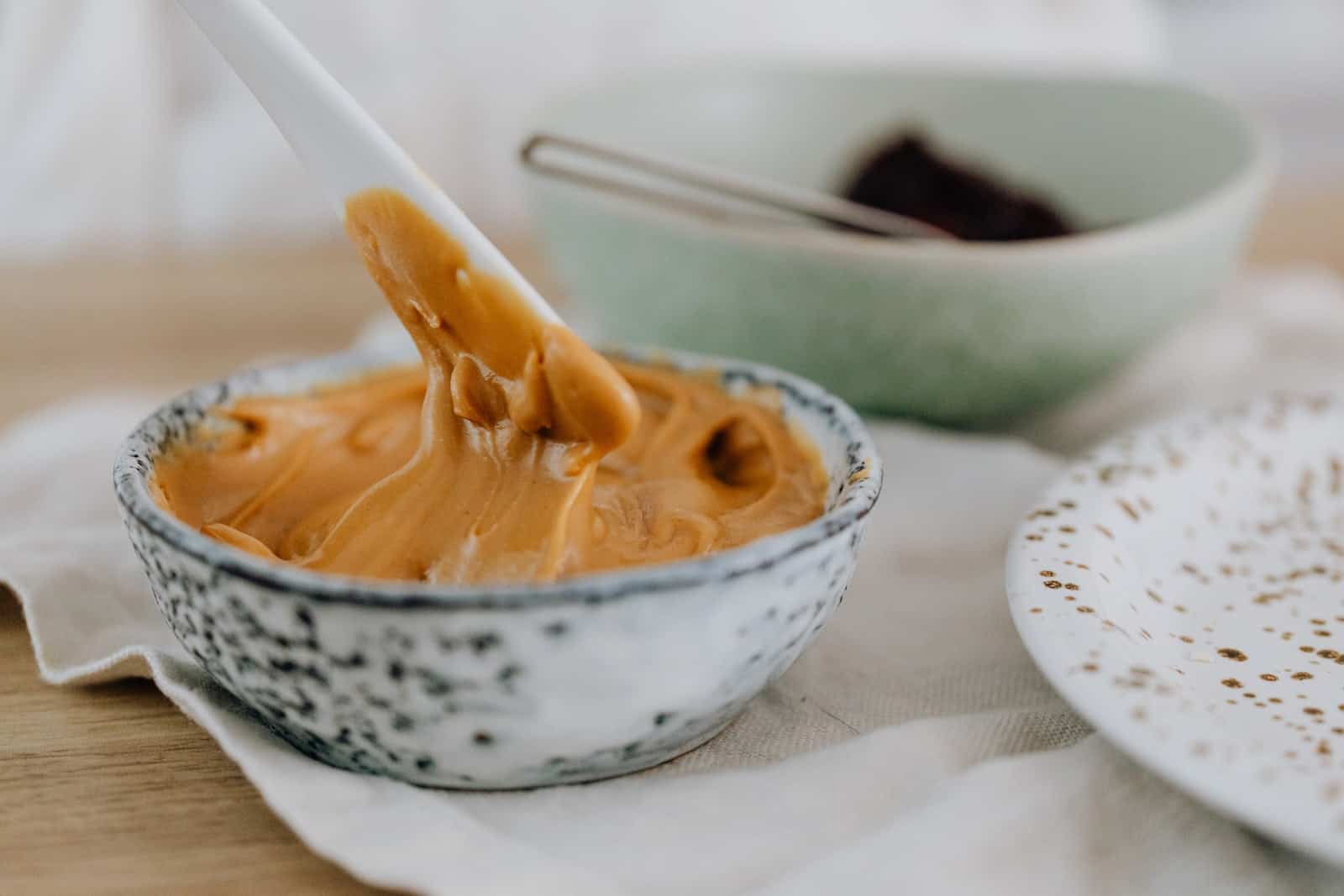
As you may already know, peanut butter is completely safe for canines, and it is often used as a dog treat, especially as a hidden treat in dog toys with compartments.
However, although it contains plenty of proteins, vitamins, and healthy fats, some brands might include xylitol, which is a big no-no for doggies as it can seriously damage their health.
You can add coconuts to your dog’s diet as well, but only in moderate quantities as they contain triglycerides, which might have a negative effect on its stomach.
There are certainly other ingredients that your pet might consume, but the ones mentioned above are the essentials of a healthy and balanced diet for a large breed such as a Bullmastiff.
Which Food Should You Avoid Giving?
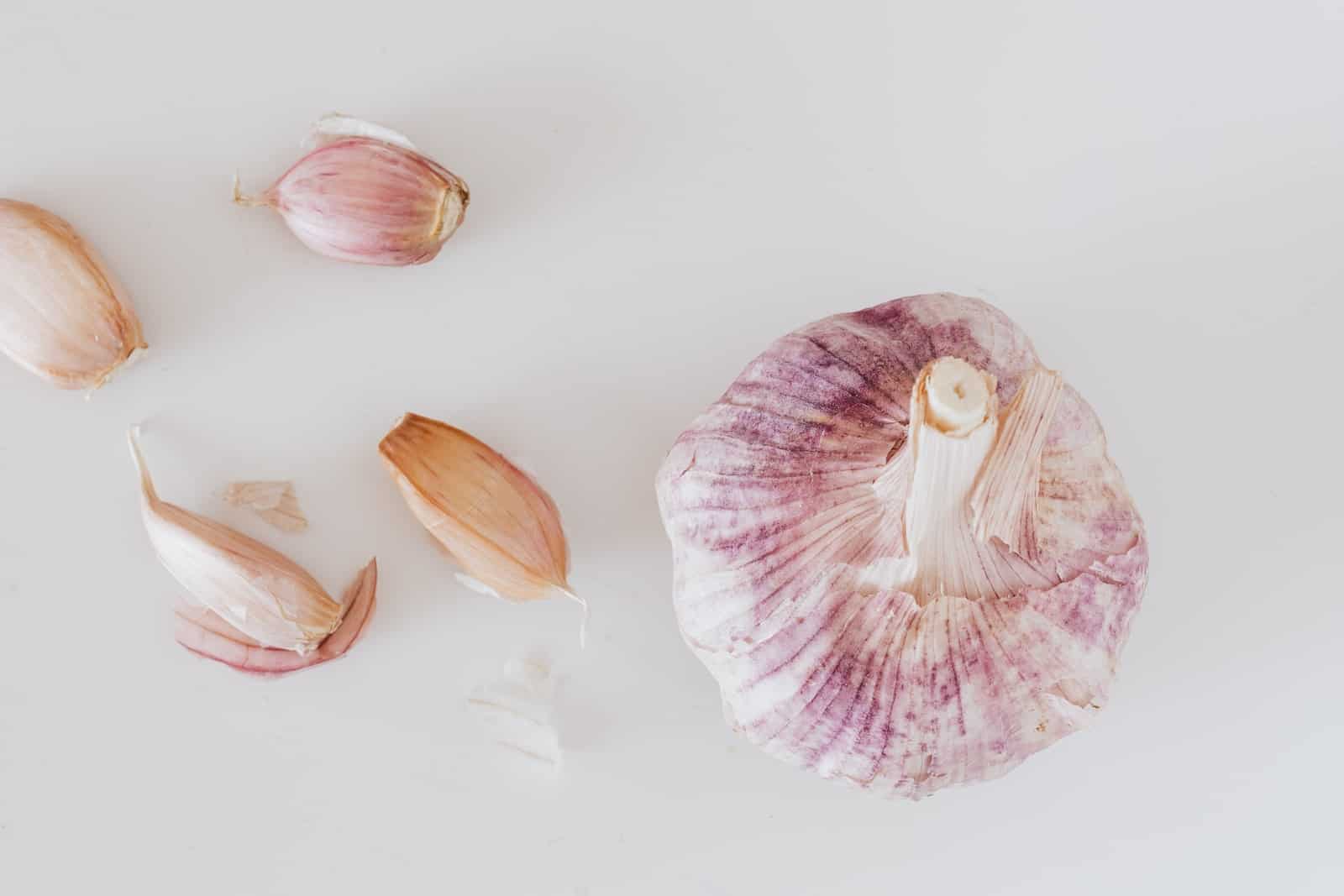
There are certain foods that you should avoid giving your Bullmastiff at any cost as they can cause several health issues, which might even lead to more serious health conditions.
Just like not all ingredients are considered healthy for humans, there are foods that aren’t suitable for dogs.
Therefore, to keep your Bullmastiff healthy and happy, here are the ingredients you should never add to their diet:
Onions and Garlic
Onions and garlic are probably essentials of a human diet, not only because of their health benefits, but also for the great taste that they add to every dish.
However, that doesn’t apply to canines. According to dog experts and nutritionists, these veggies have been linked to canine anemia, mainly because they destroy the red blood cells in their body.
N-propyl disulfide is known as a potentially harmful component that may be found in onions. In pups, this chemical causes red blood cells to break down, which ultimately results in the development of anemia.
This toxin binds to the oxygen molecules that are present in the red blood cells of your pet, which then results in oxidative damage to those cells.
Chocolate
I’m sure that most canine owners and dog enthusiasts already know that chocolate is one of the first things on the list of foods that dogs should avoid.
Although this is one of the favorite sweet treats for humans, it should never be given to canines because it contains theobromine.
Humans can easily process this chemical, but canines can’t. Therefore, even small amounts of chocolate might cause vomiting and diarrhea.
On the other hand, the excessive consumption of chocolate sweets can result in seizures, abnormal cardiac function, and other symptoms, which might lead to a dog’s death.
The best way to prevent that is not to keep chocolate anywhere near your pet, especially without supervision.
The consumption of one chocolate candy will not result in the death of your pet; nevertheless, it still might cause serious health issues that are definitely not worth it.
Macadamia Nuts
This type of nut is very common in human food, from baked products to muffins and other delicious treats. However, it should be highly avoided as an ingredient in dog food as it might cause lethargy, staring into empty space, or even vomiting and diarrhea.
What makes the nuts so dangerous for canines? Even while researchers don’t know much about it, they do know that a small amount can be toxic.
Diarrhea, vomiting, tremors, and fever are some of the most typical signs that occur after a pooch consumes anything that contains macadamia nuts.
Avocado
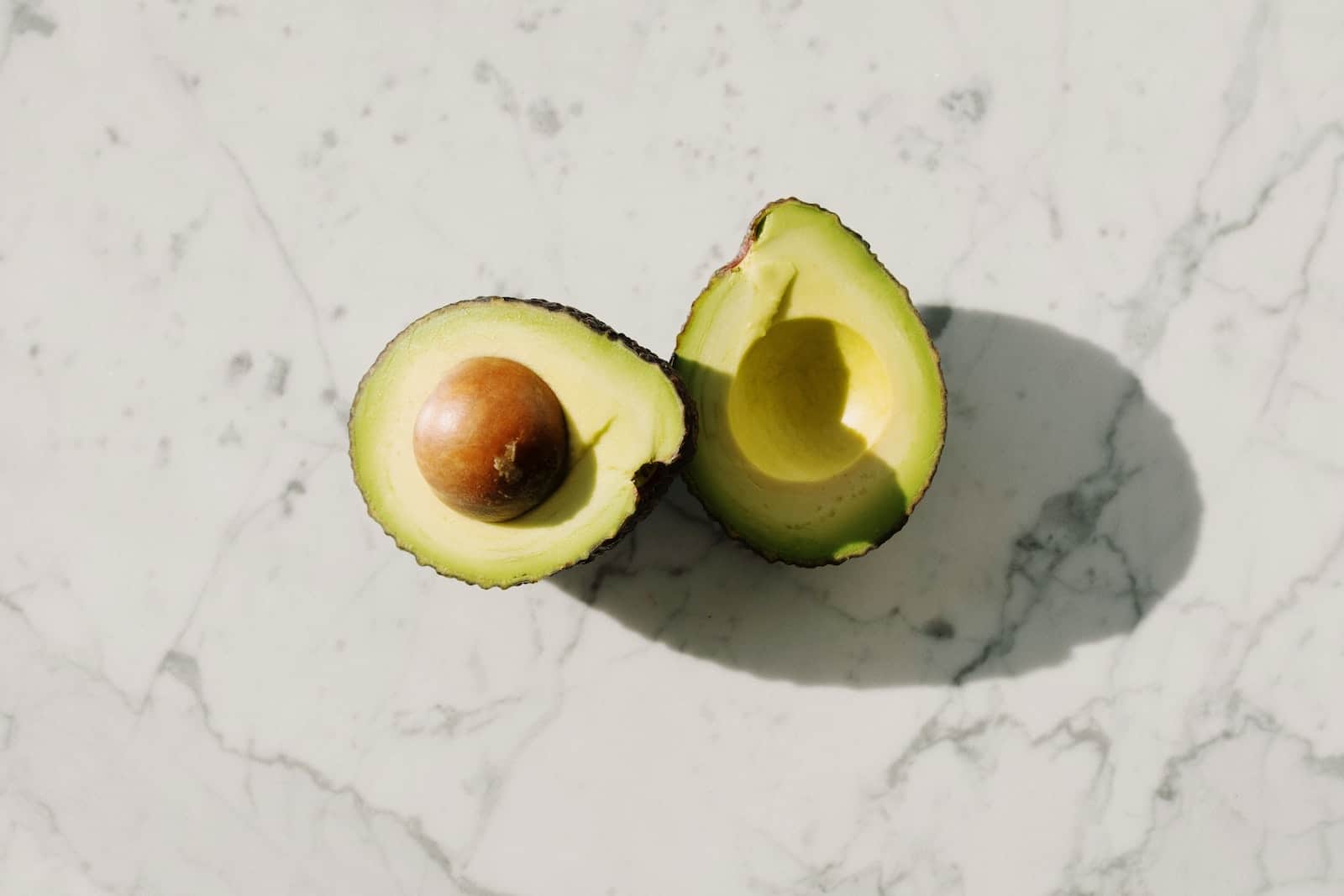
Unfortunately, guacamole is off the list for your pooch.
The main reason for that is the high amount of fat that is found in avocados, which might lead to serious stomach issues and even pancreatitis in canines.
Some of the most common symptoms that occur in case your pup ingests even the smallest amount of avocado are diarrhea and vomiting.
Another threat that avocados impose on your pet is the seed, which might become trapped in their body, causing stomach and intestinal problems.
Therefore, the next time you consume avocados, make sure to keep them as far as possible from your Bullmastiff.
Xylitol
Although this artificial sweetener is often used in meals, not many people have actually heard of this chemical.
This is a form of sugar alcohol that may frequently be found in baked products, as well as some varieties of peanut butter, sweets, and gums.
When consumed by canines, xylitol is rapidly absorbed into the circulation, which prompts the pancreas to secrete a significant amount of insulin.
Once this happens, there can be a sudden drop of sugar in the dog’s blood (hypoglycemia), but it can also lead to liver failure.
Alcohol
I’m sure no responsible dog owner has ever even thought of giving their pooch any alcohol, but just in case, let me remind you that this shouldn’t be done at any cost.
Therefore, drinks like whiskey, beer, wine, or any other alcoholic beverage are far off the list of drinks your pet should consume.
Alcohol has the same kinds of effects on dogs as it does on people, but it takes a lot less of it to cause severe health issues.
A Bullmastiff that has consumed alcohol may experience diarrhea and vomiting (best-case scenario).
Most commonly, alcohol in a canine’s body leads to respiratory problems, coma, and even death.
Caffeine
This substance is very common in human drinks, but it’s detrimental to a Bullmastiff’s health.
It can appear in any form, such as coffee beans, coffee, energy drinks, soda, or even some types of tea. Therefore, keep your pup away from any of these beverages.
Never offer your dog ice cream or drinks that have coffee flavor in them.
It’s not uncommon for people to leave stale coffee grounds or bags around the kitchen, but if you own a pup, make sure that you dispose of this stuff away from the pet as much as possible.
A few licks of coffee that has spilled on the floor won’t make the canine instantly sick, but if they drink an entire cup of coffee, it can make them hyperactive and restless to the point of developing cardiac issues.
Is Raw Food Good For A Bullmastiff?
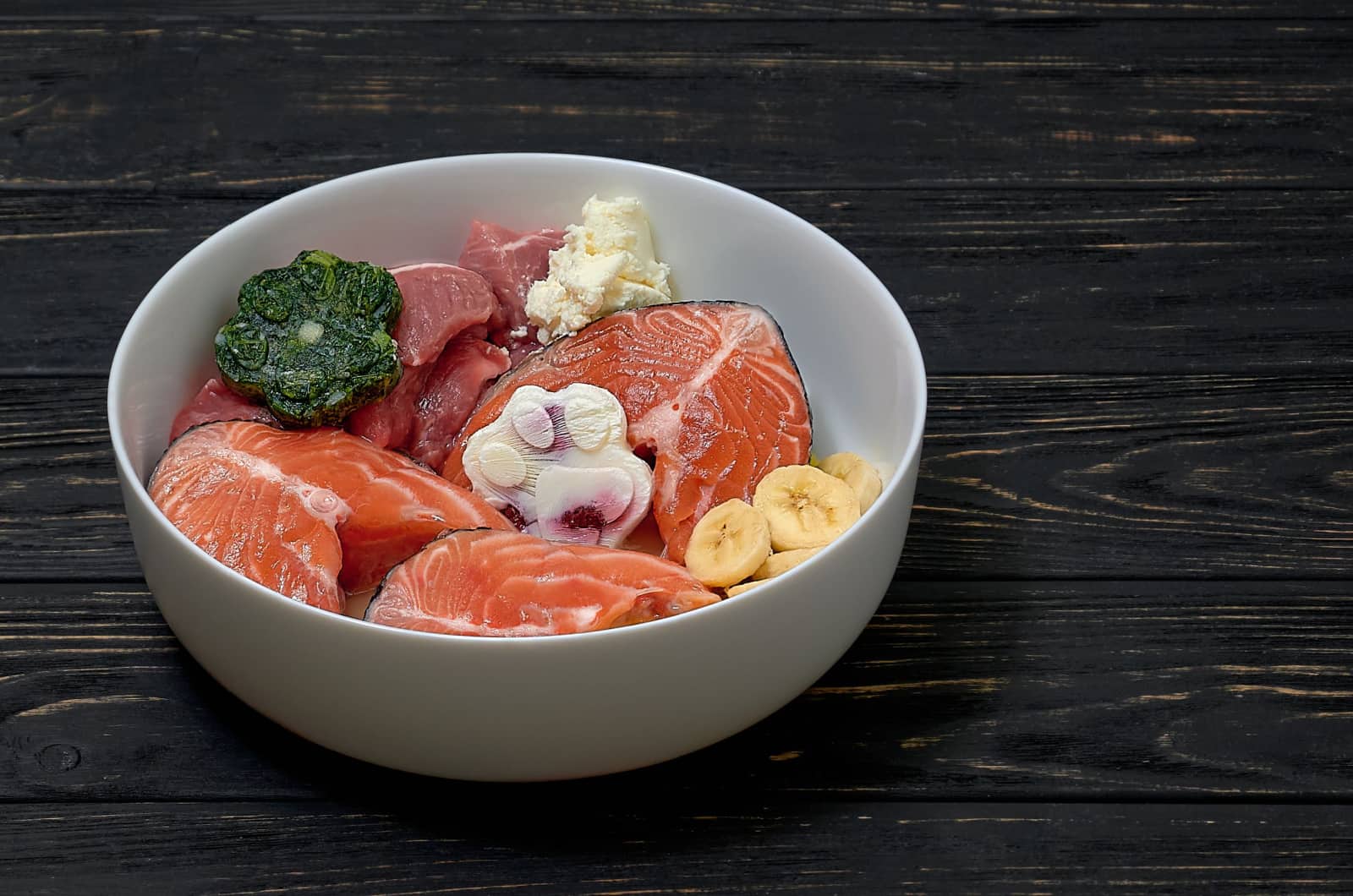
Yes, your Bullmastiff pup can eat raw food without problems, but only if you pay great attention to the amount and the quality of the food.
RELATED: How Much Raw Food To Feed A Puppy—Everything You Need to Know
I wouldn’t say that a raw diet is the best option for large dogs like Bullmastiffs and Mastiff-types of canines in general, as well as for German Shepherds, Cane Corsos, Dobermans, and other big pups.
The best dog food for your pet is the one that doesn’t cause any health issues, including allergies, bloating, or any other condition.
However, if you feed your dog raw food, they have fewer risks of becoming obese as a raw diet enhances a Bullmastiff’s energy levels and makes them more fit for dog training even after a meal.
A lot of people believe that raw pet food can also improve the state of a Bullmastiff’s coat so it appears shinier and healthier.
Risks Of A Raw Diet
Although it has plenty of benefits, raw food also carries certain risks for canine health.
One of the most common issues of the raw diet is the development of bacteria, especially in meat, which can cause different health issues (salmonella, e. coli, etc.).
Raw food can also cause choking and broken teeth as it often contains bones as one of the main ingredients.
Some people cook bones thinking that they’re doing a favor for their pets, but it actually causes an even bigger risk as the heat might break down the bone into smaller pieces, which can damage the canine’s intestines or its throat.
Although raw food is considered to be a part of the healthy diet of Bullmastiffs, Bulldogs, and all other big dogs, it should be prepared with great care to avoid any negative effect on your pet’s health.
Common Mistakes In Feeding
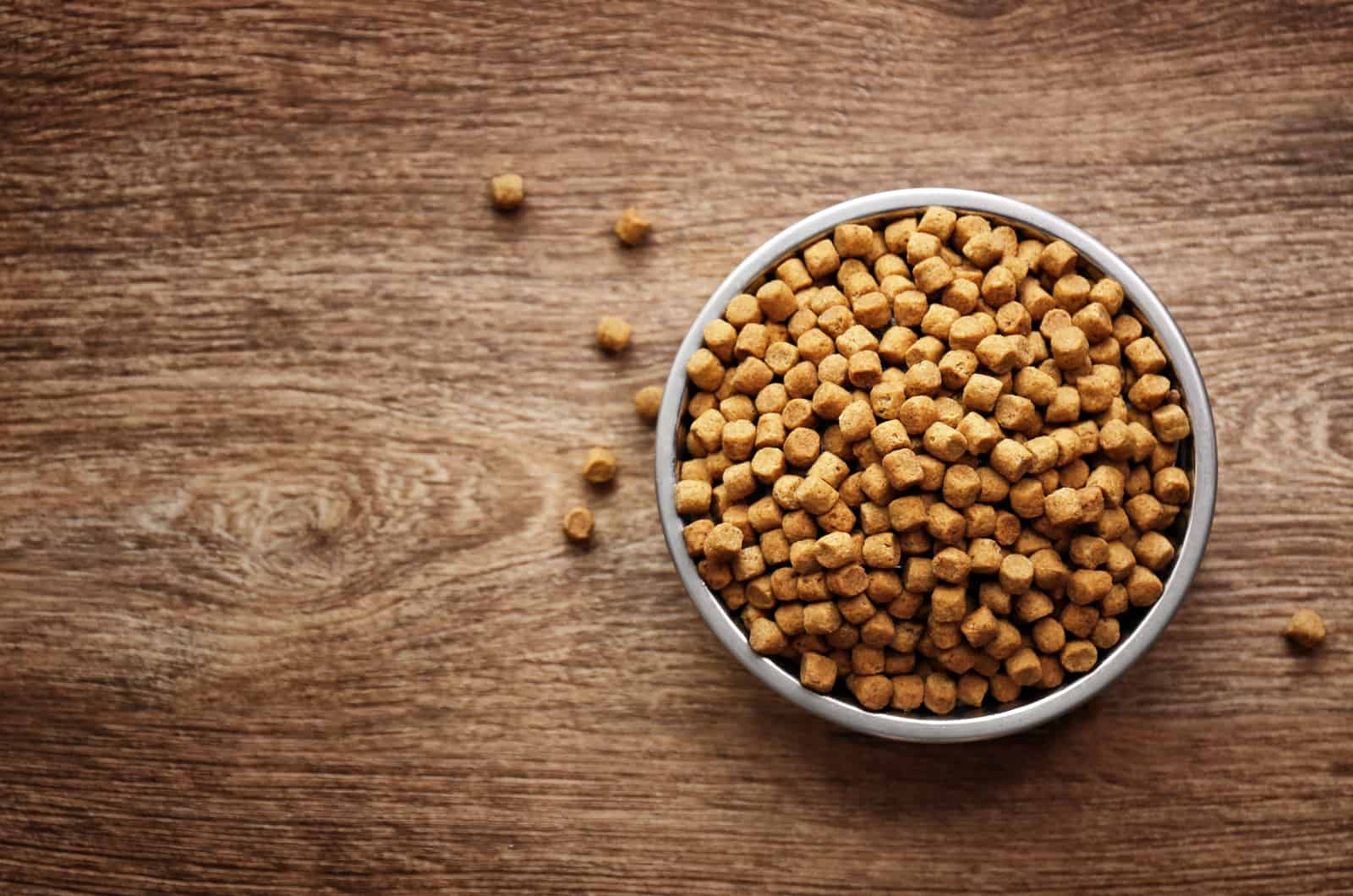
One of the most common mistakes in feeding a Bullmastiff pet is the amount of food that an owner gives them.
Although they eat more than dogs of average size, their portions and feeding schedules should be under strict control to prevent an increase in dog weight.
Keep an eye out for the following warning indicators that might indicate a shift in its normal pattern of eating:
• The collar for your adult Bullmastiff is suddenly too small for him
• The pup refuses longer walks, and gets easily out of breath
• The dog loses interest in any type of training or outdoor activity
• It turns into a “lazy dog” (prefers to lay around and doesn’t respond to your commands)
If you notice any of these signs, you should consult a vet about your dog’s weight gain and possible solutions.
The vet, or a dog food nutritionist, might make a meal plan that will help your pet lose weight while maintaining the right amount of nutrients your pup needs in order to function properly.
How Big Do Bullmastiffs Grow?
In order to know how to feed your pup and keep it healthy, you should check what the average size of Bullmastiffs is, and how much they should weigh once they become an adult.
According to the American Kennel Club’s (AKC) breed standard, male Bullmastiffs usually weigh anywhere from 110 to 130 pounds, while female canines weigh about ten pounds less.
The size of these canines can vary depending on their well-being and the environment in which they were raised.
Of course, these are just general guidelines on the weight of Bullmastiffs, so certain variations are allowed.
However, if they weigh more than 140 pounds or less than 100 pounds, there’s a high chance that your pup is either overweight or underweight.
Common Health Issues That Might Be Related To A Bullmastiff’s Diet
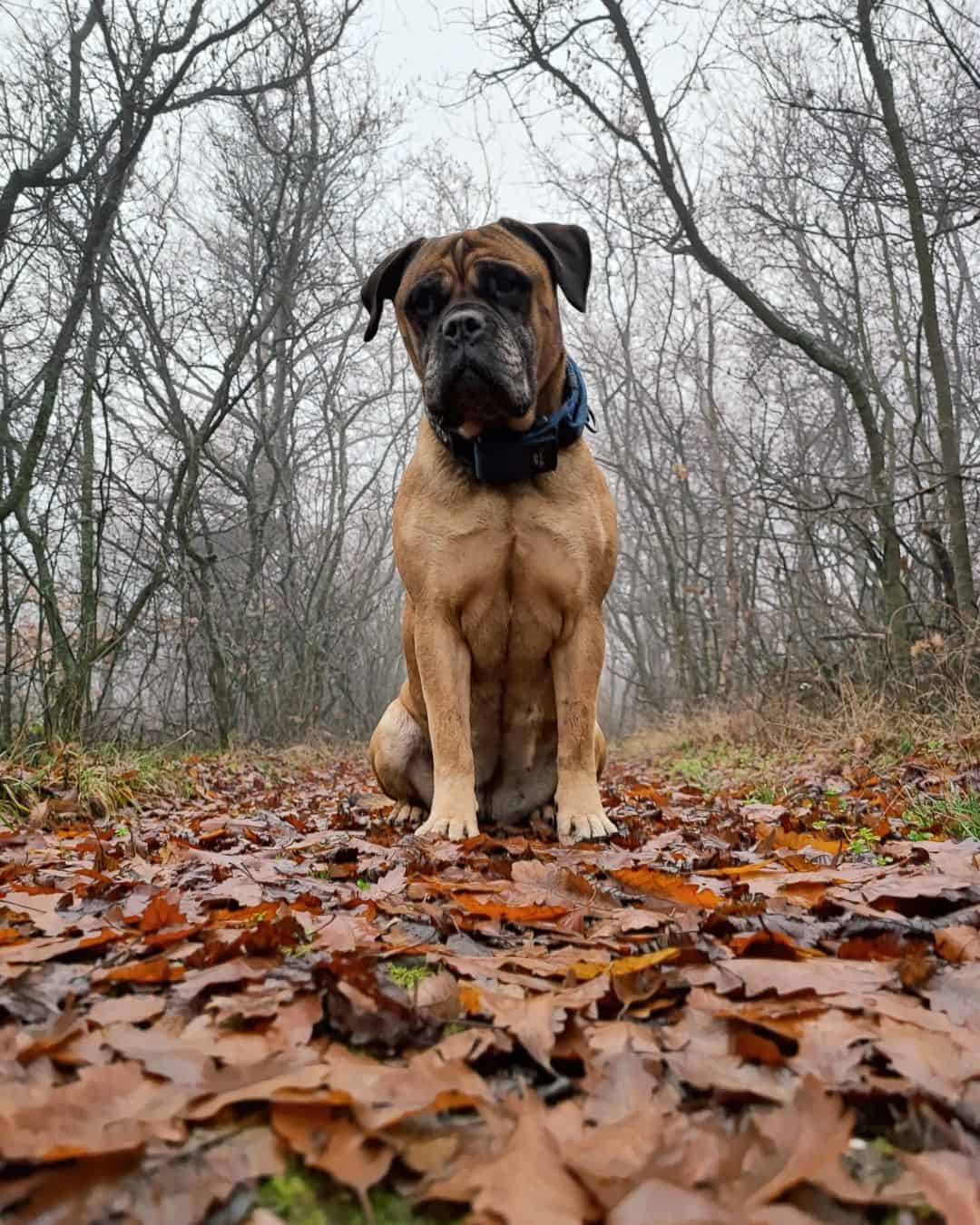
Bullmastiffs are great guard dogs of good health, which is why they’re becoming popular as family pets.
However, they might be prone to certain health issues, just like any other dog, so it’s crucial for every potential owner to choose a reputable Bullmastiff breeder who will be able to provide them with health records and medical history of the puppy, as well as of its parent canines.
However, not all diseases are related to genetic background.
Unfortunately, some health conditions might be caused or related to obesity, which is a common issue in Bullmastiffs.
Diabetes
This is a chronic health condition that affects a great number of canines, including Bullmastiffs, and it is often linked to dog obesity.
The main reason for that is the canine’s inability to transform ingested food into energy, which leaves them with excessive amounts of fat in their body.
Unfortunately, there is no cure for diabetes, but there are certain ways, including a switch in the dog’s diet, that might have a positive effect and decrease the severity of symptoms of this disease.
Hip Dysplasia
A big number of large dogs are at risk of developing this joint disease, which greatly affects the quality of their life.
Hip dysplasia is generally considered a genetic defect, but it usually occurs in the later stages of a pup’s life. The symptoms might get worse if the dog is overweight, which is why it’s essential for Bullmastiffs to maintain a healthy weight.
Canines that are affected by this condition may have trouble walking or carrying out day-to-day activities because of the pain and discomfort they feel all the time.
Bloat
The abdominal pain that results from bloat is caused by the stretching of your Bullmastiff’s stomach, which can be caused by either food or gas.
It is believed that big canines are more prone to bloating because they eat a larger amount of food, but it can happen in any type of dog, even a small-sized one.
It’s unknown why bloat and GDV occur in dogs, but there are suspected risk factors that can increase the chance of bloat.
While bloat can occur in any dog, risk factors that increase the chances of bloat in dogs are the dog’s diet, its weight, not eating the right food, its age, etc.
Ligament Issues
Because they’re a large breed of dog, Bullmastiffs may be more likely to suffer from leg and knee problems, such as a ruptured anterior cruciate ligament (also known as an ACL).
As a result of this rupture, any increase in weight might cause more pain in the injured limb, which is why most canines refuse to go out or enjoy their favorite activities.
The only way to ensure the knee’s stability is through medical intervention in the form of surgery. Following the completion of the surgical procedure, your dog will require rest for a period of six to eight weeks, so that the surgical site can recover.
Because being overweight might make this disease worse, you should make sure that your dog maintains a diet that is both nutritious and balanced.
Hypothyroidism
In dogs, hypothyroidism may be identified by the underproduction of hormones by their thyroid gland.
This gland is responsible for regulating the canine’s metabolism, which, in turn, has a variety of effects on the pup.
Changes in your pet’s appetite and excessive thirst, as well as lethargy, loss of hair, and cardiac issues, are all possible symptoms of canine hypothyroidism.
Even though there is no known cure for hypothyroidism, there are certain ways to treat it.
Even when hypothyroidism is present, most dogs are able to live a long and healthy life with the help of medication that is administered after the illness has been diagnosed.
If you include a high-quality feeding guide, your pup’s life might become much easier with this condition, and it might get its energy levels up to max again.
Allergies
There are several potential triggers for allergic reactions – some of them being food, fleas, and the environment (grass or pollen).
Common symptoms include skin irritation, dry, cracked skin, severe hair loss, reddish ears with a foul-smelling discharge, weepy and watery eyes, a runny nose, and an itchy scalp.
The treatment could be as easy as removing the underlying problem (such as a change in the natural diet).
Antihistamines are occasionally used in situations when avoiding the allergen or making adjustments to the environment are not effective.
Steroid medication is frequently prescribed for a brief course of treatment for more severe instances. Immunotherapy, often known as allergy injections, has the potential to be quite beneficial.
However, no medication should be given to a dog without prior consultation with a vet.
Are Dog Supplements Good For My Bullmastiff?
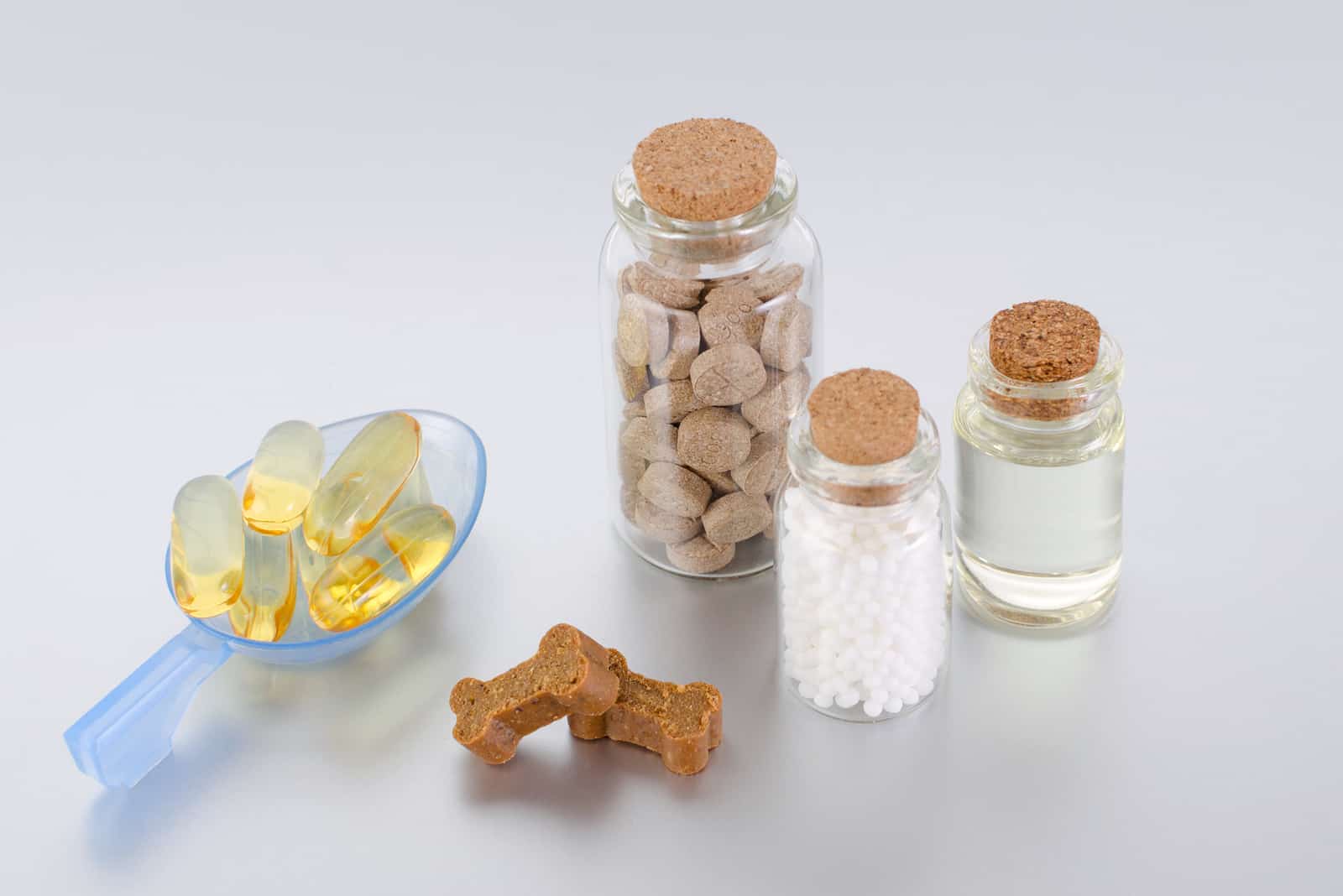
Glucosamine is the first thing that comes to most people’s mind when they think of a joint supplement for their Bullmastiff.
MSM, chondroitin, and turmeric are a few examples of additional nutrients that may be taken along with glucosamine, which is the most often used active component (curcumin).
These are usually introduced to a senior Mastiff’s diet, but they can be given earlier if there’s a need for them.
Generally, a Bullmastiff’s diet should contain a wide variety of nutrients, but if you wish to add more supplements to its food in order to improve its immune system and overall health, you should talk to a veterinarian first.
Wrapping Up
The Bullmastiff feeding chart is a basic guideline for all inexperienced lovers of these pups who would like to own one as a pet.
The best way to keep your pup in good health is to keep its weight within a healthy limit.
Although they have an adorable face, I hope you won’t give in and let them eat more than they should.
Sometimes, “no” is a way of showing your furry companion just how much you love it.
READ NEXT:
Bullmastiff Colors: A Handy Guide To 5+ Colors & Markings
Bullmastiff Price: Security At What Cost?
